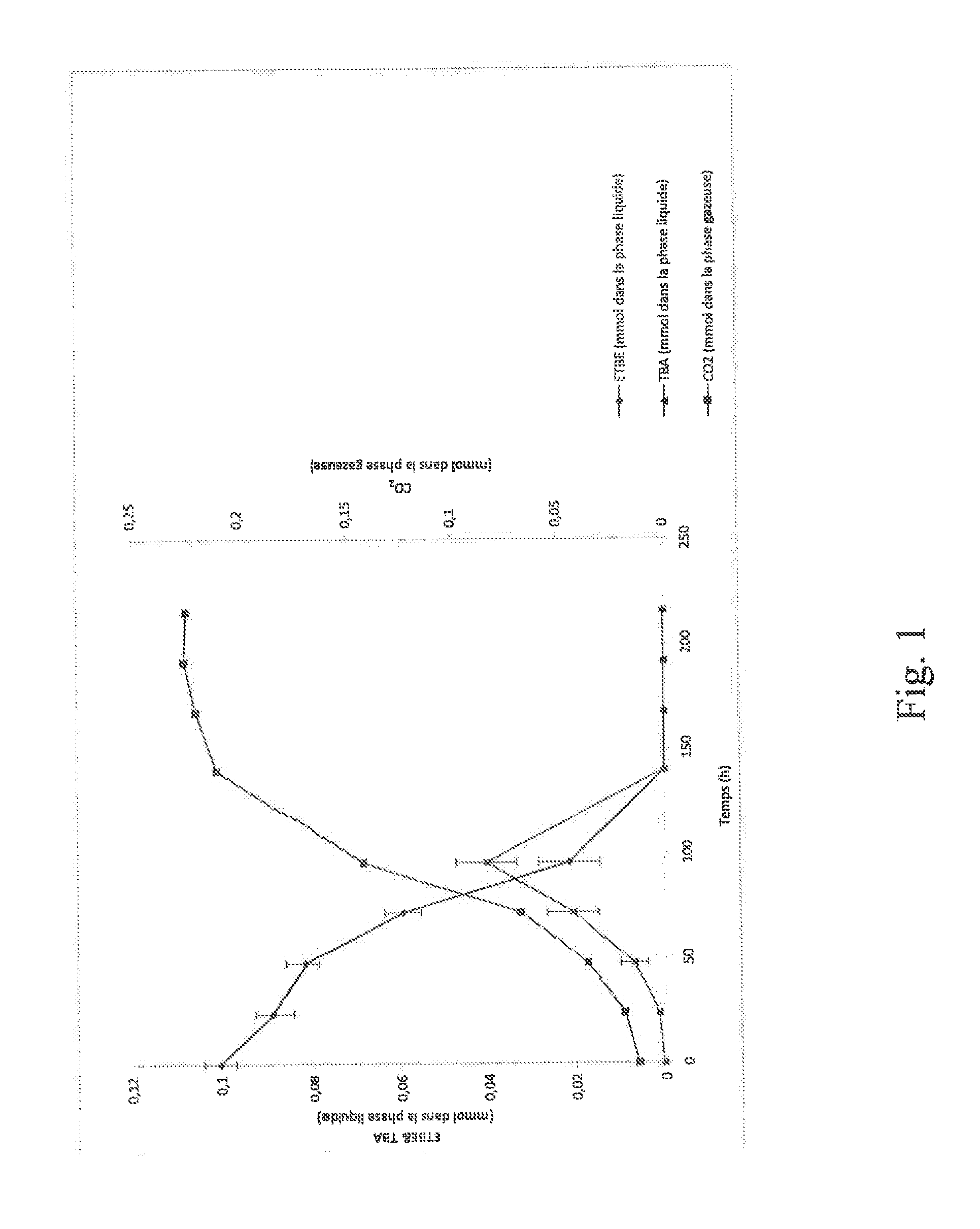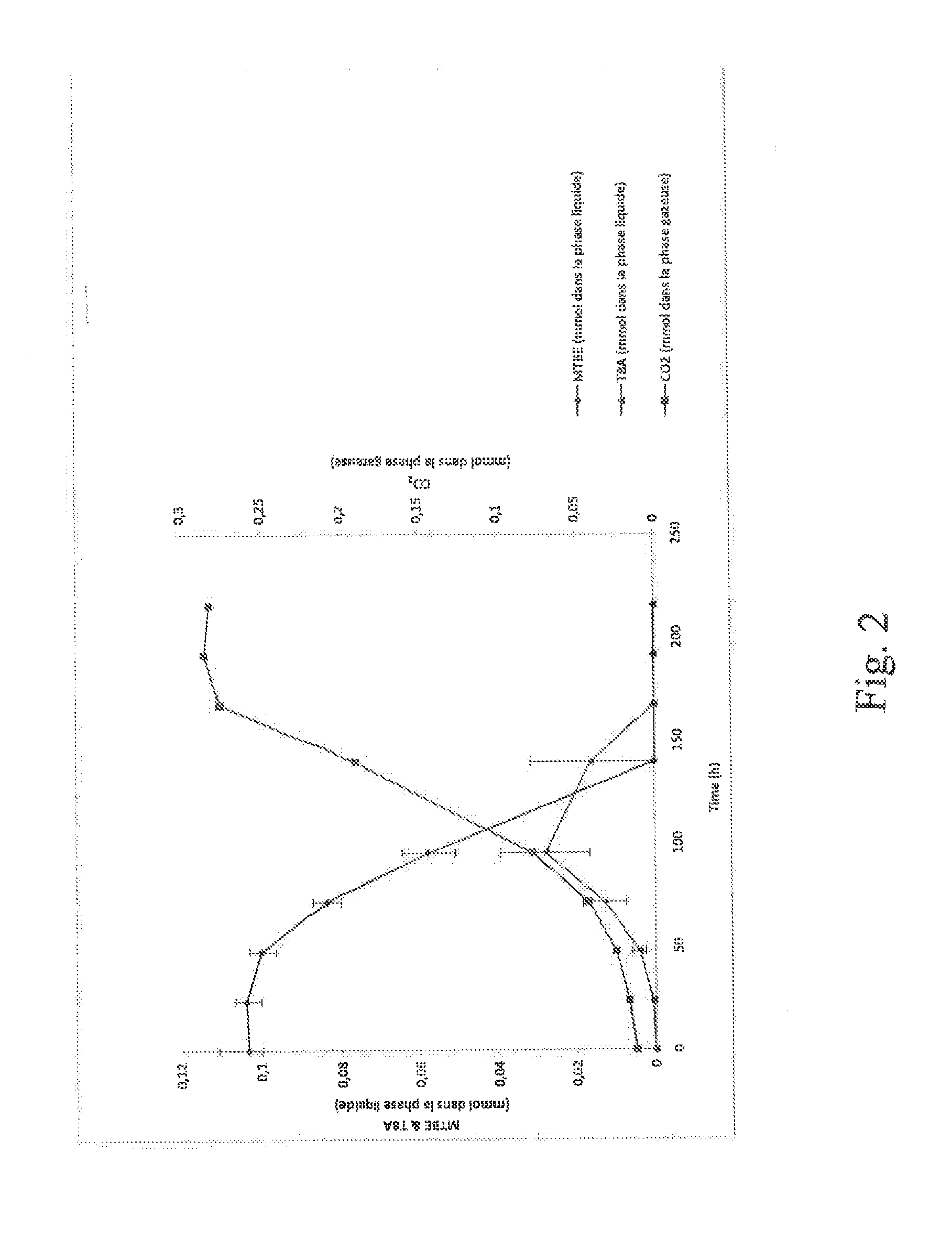Bacteria of the genus pseudonocardia that are capable of degrading methyl tert-butyl ether (MTBE) or ethyl tert-butyl ether (ETBE) into a solution in effluent
a technology of ethyl tert-butyl ether and pseudonocardia, which is applied in the direction of microorganisms, biochemical apparatus and processes, biological water/sewage treatment, etc., can solve the problems of chronic pollution, numerous accident risks, and transport of hydrocarbons by land or water
- Summary
- Abstract
- Description
- Claims
- Application Information
AI Technical Summary
Benefits of technology
Problems solved by technology
Method used
Image
Examples
example 1
Growth of the Bacterium of the Genus Pseudonocardia Deposited On Jul. 12, 2012 Under No. CNCM 1-4656 At the Pasteur Institute (25 Rue Du Docteur Roux, F-75724 PARIS Cedex 15, France) On A Mineral Medium In the Presence of ETBE As A Single Carbon Source
[0019]A preculture of the bacterium of the genus Pseudonocardia No. CNCM 1-4656 is made: the strain Pseudonocardia No. CNCM 1-4656 is inoculated on a saline mineral medium MM supplemented with ETBE at approximately 200 mg·L−1 as a source of carbon and energy.
[0020]The medium MM has the following composition:
KH2PO41.4gK2HPO41.7gNaNO31.5gMgSO4, 7H2O0.5gCaCl2, 2H2O0.04gFeCl3, 6H2O0.012gConcentrated Solution of Vitamins1mLConcentrated Solution of1mLOligoelementsH2O1L
[0021]The concentrated solution of vitamins has the following composition for 1 liter of distilled water:
Biotin200 mg Riboflavin50 mgNicotinic Acid50 mgPantothenate50 mgp-Aminobenzoic Acid50 mgFolic Acid20 mgThiamine15 mgCyanocobalamin1.5 mg
[0022]The concentrated solution of o...
example 2
Growth of the Bacteria of the Genus Pseudonocardia Deposited On Jul. 12, 2012 Under No. CNCM 1-4656 At the Pasteur Institute (25 Rue Du Docteur Roux, F-75724 PARIS Cedex 15, France) On A Mineral Medium In the Presence of MTBE As the Single Source of Carbon
[0026]A preculture of the bacterium of the genus Pseudonocardia No. CNCM 1-4656 is made: the strain Pseudonocardia No. CNCM 1-4656 is inoculated on a saline mineral medium MM supplemented with MTBE at approximately 200 mg·L−1 as a source of carbon and energy. The medium MM has the composition that is described in Example 1.
[0027]After growth, this preculture is used for inoculating 100 mL of a medium MM (inoculation rate: 10% v / v) to which MTBE is added at a final concentration of approximately 300 mg·L−1 in an Erlenmeyer flask with a 500-mL capacity that is closed with a Teflon-coated plug so as to prevent any loss of MTBE during growth. Sampling is done at time t=0 for a metering of MTBE at the beginning by gas phase chromatograp...
PUM
 Login to View More
Login to View More Abstract
Description
Claims
Application Information
 Login to View More
Login to View More - R&D
- Intellectual Property
- Life Sciences
- Materials
- Tech Scout
- Unparalleled Data Quality
- Higher Quality Content
- 60% Fewer Hallucinations
Browse by: Latest US Patents, China's latest patents, Technical Efficacy Thesaurus, Application Domain, Technology Topic, Popular Technical Reports.
© 2025 PatSnap. All rights reserved.Legal|Privacy policy|Modern Slavery Act Transparency Statement|Sitemap|About US| Contact US: help@patsnap.com


